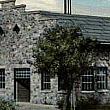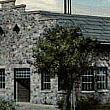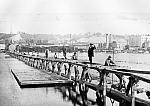
Grand Rapids Water Story, 19th Century, Part I
by Albert Baxter
The story begins with the early springs and water courses available to the first settlers, and described by Albert Baxter in his book, The History of the City of Grand Rapids, published in 1891. Several articles will follow about the Grand Rapids Hydraulic Company, the first water service in the city, begun in 1848 for the purpose of supplying pure wholesome spring water for domestic purposes (human consumption) and fire protection.
Early Springs and Water Courses
Reeds and Fisk Lakes, east of the city, are the source of the main stream of Coldbrook, running northwesterly, coming into the north part of the city, and discharging into the river a little north of Coldbrook Street. Carrier Creek is a northern branch of Coldbrook, which ran in or near its original bed, but most of the water of both streams was diverted by pumping to the hill reservoir and used in the city supply.
To the South
To the south there was once a pretty brooklet, coming from the part of the town called Bostwick’s addition, crossing Division Street, near where the Union depot later stood at the foot of Oakes Street, joining another brook coming in from a swamp a short distance south, then flowed to the Grand River near the Fulton Street Bridge.
Still further south came a stream from numerous springs on Blakely’s addition and beyond, crossing Division Street at the north part of the Grant Addition Tract, ran down a ravine across the Grandville Road, flowing into the river below where the gas works were located. At the point where this stream passed out from the low hills there was, at an earlier day, a dam and race constructed, a small building erected, and a turning lathe and other light machinery operated there for a few years.
In the Village
Another noticeable rivulet had its rise from springs along and south of Fountain Street, and a little west from that street, it flowed northerly through a pond bordered by iris and willows, passed the Post Office building on Division Street, flowed toward Crescent Avenue near Ionia Street, rounded the north end of Prospect Hill (now gone) and followed closely the hill’s western base back nearly to Lyon Street, then from Kent Street turned westerly and half way to Canal Street where there was another pond, flowing finally northwesterly across a miry place in Canal Street and into the Grand River near Erie Street.
Excerpted from History of the City of Grand Rapids, by Albert Baxter, pgs. 7 – 8.

 facebook
facebook











